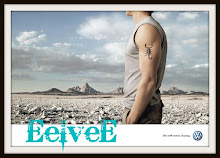Who you need and where to find them.
Two of the best places to find cast and crew are www.shootingpeople.org and www.talentcircle.co.uk, where you can advertise for crew on the message boards.
In addition to the writer, the two main roles are:
director
This role varies tremendously from project-to-project, but, in general terms, a director has creative control over the project from when he/she comes on board until the project is completed.
producer
This is a hard role to define because there are so many different aspects to being a producer and each producer is different (especially when it comes to making a short film). But, put simply, a producer is where the buck stops on money, organisation, the team and rights.

heads of department
There are no hard-and-fast rules about how many crew members you need, but there are some heads of department that will make your life a lot easier:
line producer - ensures that the film comes in on time and on budget
director of photography (DOP) - in technical charge of how the film is lit and shot
production designer/art director - in charge of the production design helps create the style of the set. On low budget films these two roles are often merged.
gaffer - chief lighting technician
1st assistant director (1st AD) – runs the set according to the needs of the director
editor – cuts the film together
production manager – organises everything and everyone on set
sound recordist – in charge of everything to do with recording sound
additional crew members
Depending on the scale of your production, you may also need:
focus puller – in charge of focussing the camera
clapper loader – loads the camera, takes care of the stock and records each take
location manager – finds and secures locations
grip – looks after all the equipment for supporting and moving the camera while shooting (tracking, cranes etc.)
continuity/script supervisor – makes sure everything seen on camera is consistent from shot-to-shot
2nd assistant director (2nd AD) – helps the 1st AD, particularly co-ordinating actors to and from set
3rd assistant director (3rd AD) – is the 1st AD’s right-hand person. He/she is always on set and often co-ordinates the runners
boom operator – holds the boom, ensuring that the microphone is as near as possible to the actors without being in shot
sparks - lighting technicians
costume designer – designs, purchases, and manages costumes
hair/makeup designer – designs, and usually executes, hair and makeup
production co-ordinator – works under the production manager to co-ordinate the smooth running of the set
storyboard artist – works with the director to create a shot by shot storyboard of the action to be filmed
stills photographer – takes still images of actors and crew for publicity reasons
assistants and runners – needed in every department - the more hands the better

cast
Casting is a vital area of filmmaking and one to which you should devote time and energy. Finding the right actor for a part requires skill and patience.
If you have an actor in mind and want to get a script to them then you will need to find out who their agent is by looking in Spotlight. This is the book that all actors appear in with their vital statistics and their agent details. There is an online version at www.spotlightcd.com. If you pay a subscription, you can get actors’ CVs and more information about their skills.
Getting a well known actor for short films is hard, but not impossible. If you have invested time in getting the script right, and the part you are asking them to play is interesting to them, then there is no reason why a good actor would not want to make a short film.
Casting your film with unknown, local actors is an easier option and you will find them at your local theatre, youth group or drama workshops. They will need to prepare a short piece for the audition and you should have something in mind to help you decide if they are right for the part.
Once you have found your ideal cast then you will need to commit some time to learning how to work with actors. This is a complex process and one that takes a lifetime to get right. Sometimes actors can get forgotten in the maelstrom of shooting, - make sure that someone is always looking after them (often the 2nd assistant director’s job – see 'additional crew members') and that you have prepared them well for what you’ll expect of them each day.

No comments:
Post a Comment